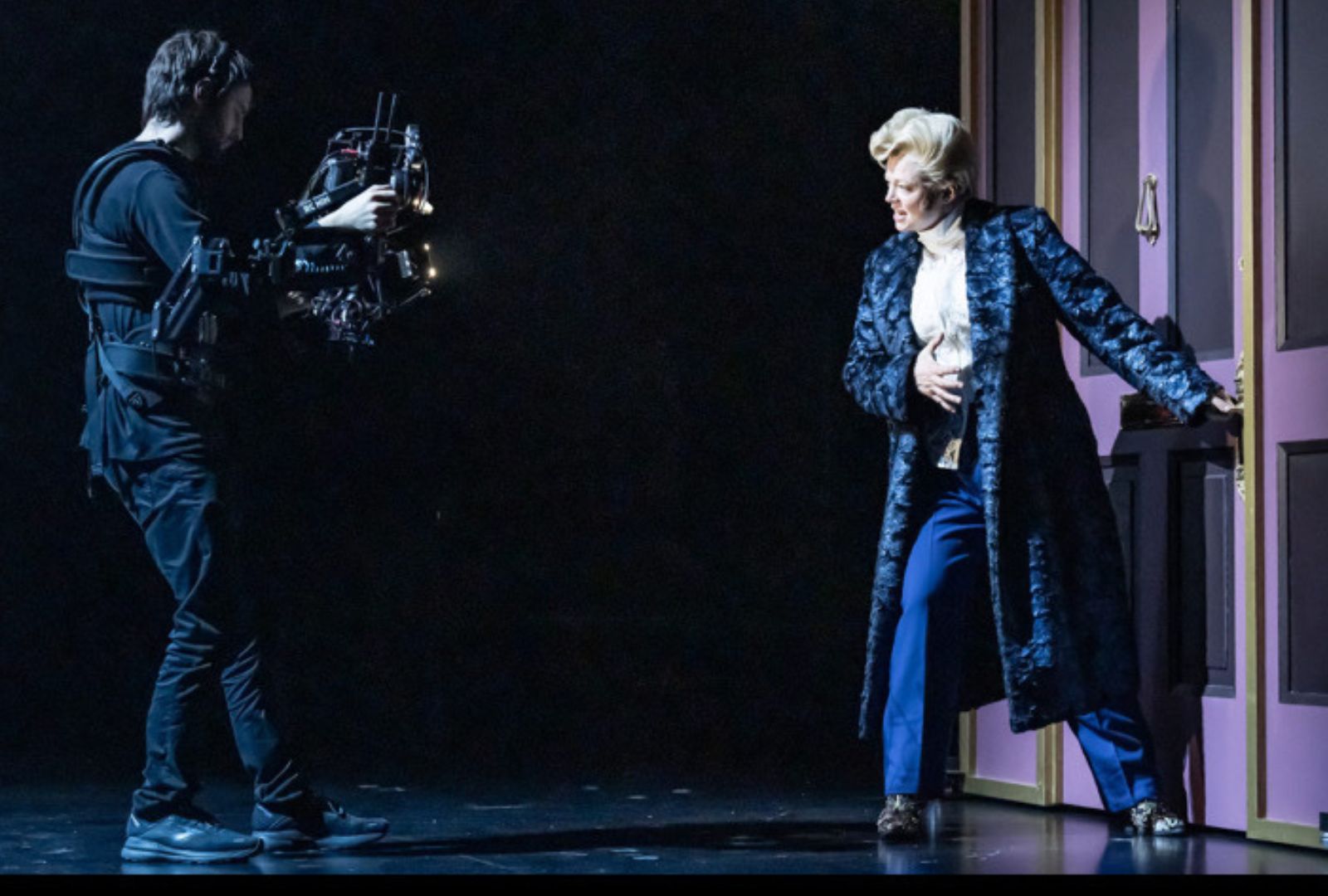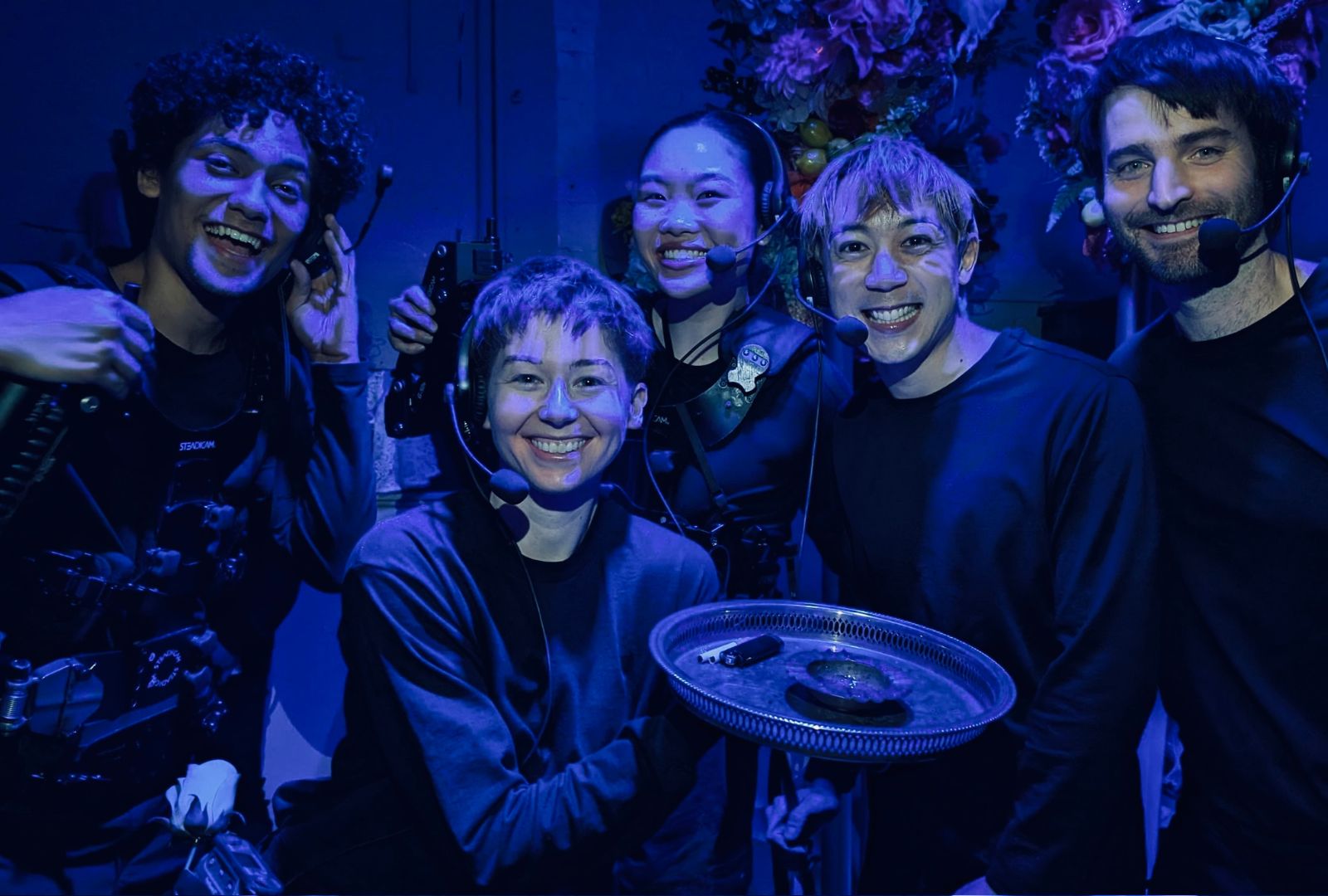Benjamin Sheen (Directing, 2017) has played a pivotal role in the global success of The Picture of Dorian Gray, bringing his technical precision and artistic intuition to the production’s live video design. As Camera Captain, he leads an ensemble of performers through the complex visual choreography that has become a hallmark of Kip Williams’ (Directing, 2009) staging. From Sydney to London to Broadway, Ben’s collaborative spirit and precision has underpinned this award-winning theatrical experience. We spoke to Ben about the unique demands of the show, nominated for six Tony Awards, and the growth that has shaped his international journey.
Congratulations on The Picture of Dorian Gray’s incredible international journey! Can you tell us a bit about your role as Camera Captain?
I was part of the original production back in 2020 as a camera operator. I didn’t have a lot of camera experience at this point, but Kip Williams (Directing, 2009) was keen to have Directors within this role (Sarah Hadley (Directing, 2018) was also with me). He was keen for us to help find shots on the floor that could support the dramaturgy and respond to the characters. I really loved this aspect of the work. I was lucky enough to return to the show for the London season and now on Broadway.
As Camera Captain, I’ve been assisting the new camera crew to learn how to best use camera equipment within the show. On Broadway, the camera team are all actors and performers without a camera operating background (much like I was when I started off). We have very much been trying to create a cohesive ensemble onstage – with precise camera work as well!
Do you have a favourite moment or sequence in Dorian Gray that you love operating the camera for?
I really enjoy the sequence around the flower couch – it’s very kinetic and has a dangerous tone, peering through flowers and spinning around the couch with Sarah Snook (Acting, 2008). Operating Steadicam I find the most fun when you really have to lock into the rhythm of the performer and find the counterbalance with the camera. Similarly, the finale of the show I really enjoy, all the cameras are onstage as we swirl around Sarah in a chaotic breakdown. While there is specific choreography here, Sarah will often bring a slightly different energy and we have to respond to that in the moment – I love the live theatricality of it.

You’re working with several NIDA alumni on this production, including Sarah Snook, Kip Williams and Daniel Herten. What’s it like collaborating with fellow grads on a project of this scale in an international setting?
It’s quite surreal and wonderful! It certainly felt like a very special show when it opened in Sydney, but I never quite believed I would follow it over to Broadway. Kip was a teacher while I was at NIDA and a mentor for me on my graduation production. I’ve now had the privilege to work with him on 5 live-video productions in various roles – it’s been amazing to see that language develop overtime.
I think I learnt a lot about collaboration at NIDA, being able to interact with all the other cohorts in various projects was one of my favourite aspects of the school. And this show really is such a showcase and celebration of technical and artistic collaboration, now on an international stage.
What’s one behind-the-scenes challenge on Dorian Gray that audiences might be surprised to learn about?
I think some audience members think that because there are pre-recorded elements, that it somehow makes certain sections easier, but in many ways, it forces even greater precision and gymnastics for Sarah and the team. It is so easy for us to make a mistake in lining up a shot and for the illusion to break. The iPhone sequences are especially hazardous – the wrong swipe of a finger can easily select an incorrect filter and break the storytelling – it remains a high wire act each night.
Having now worked on this production across three major cities (Sydney, London and New York), how has that international experience shaped or expanded your approach as a creative professional?
It’s been a fascinating learning experience, in all 3 cities we have ultimately developed the same product, but each country has their own way of structuring the staffing within the theatre, so the process has been quite different each time. Teaching a camera track is different for each person, we write lots of detailed information on the track, but some people learn through their body or through visuals. It really depends on the background of the person.
In London we worked with technicians and stage managers while in New York the team is made up of actors. Ultimately it serves to keep talking together until you can find a shared language. I think it’s a lesson I’ll certainly take forward into future projects.

As someone who’s directed, produced, designed and now captains complex live camera work, how do you approach leadership in a rehearsal room and on stage? What qualities do you think are most valuable in those environments?
Hmm good question! One great lesson I took away from NIDA is that great directing is about asking the right questions at the right moment. I think that’s a useful tool in other settings too! When assisting anyone into a new role, you ultimately want to empower them to make it their own and guide them in the right direction with the right questions and concise information. I think this is a useful tool even in a well established and precise production such as Dorian Gray. I also love a good warm-up game and am thrilled that we continue to play games on Broadway before every show – it’s such a great way for us to all feel part of a shared team and build that sense of ensemble.
What advice would you give to current NIDA students or emerging theatre makers who are interested in pursuing work internationally?
I feel extraordinarily lucky to be here and it is amazing to see so many Australian creatives overseas. I think there is a real hunger for the creativity and bold experimentation of Australian work. I really was able to sink my teeth into experimentation at NIDA and take advantage of as many of the amazing resources available to me.
I first played with video theatre in a project with the A3 (third-year Acting) students – adapting a Pinter play into a video work using the rehearsal room webcams. One of my favourite experiments was on an optional project with the props students, recreating famous film scenes with puppetry. I just encourage everyone to experiment and play as much as you can!
Interested in study at NIDA? Register now for NIDA’s Open Day, 14 June.
